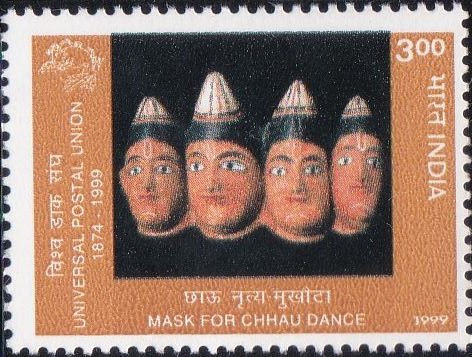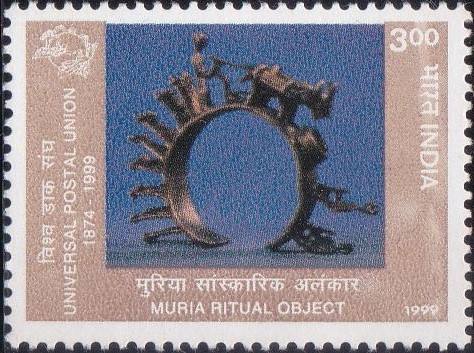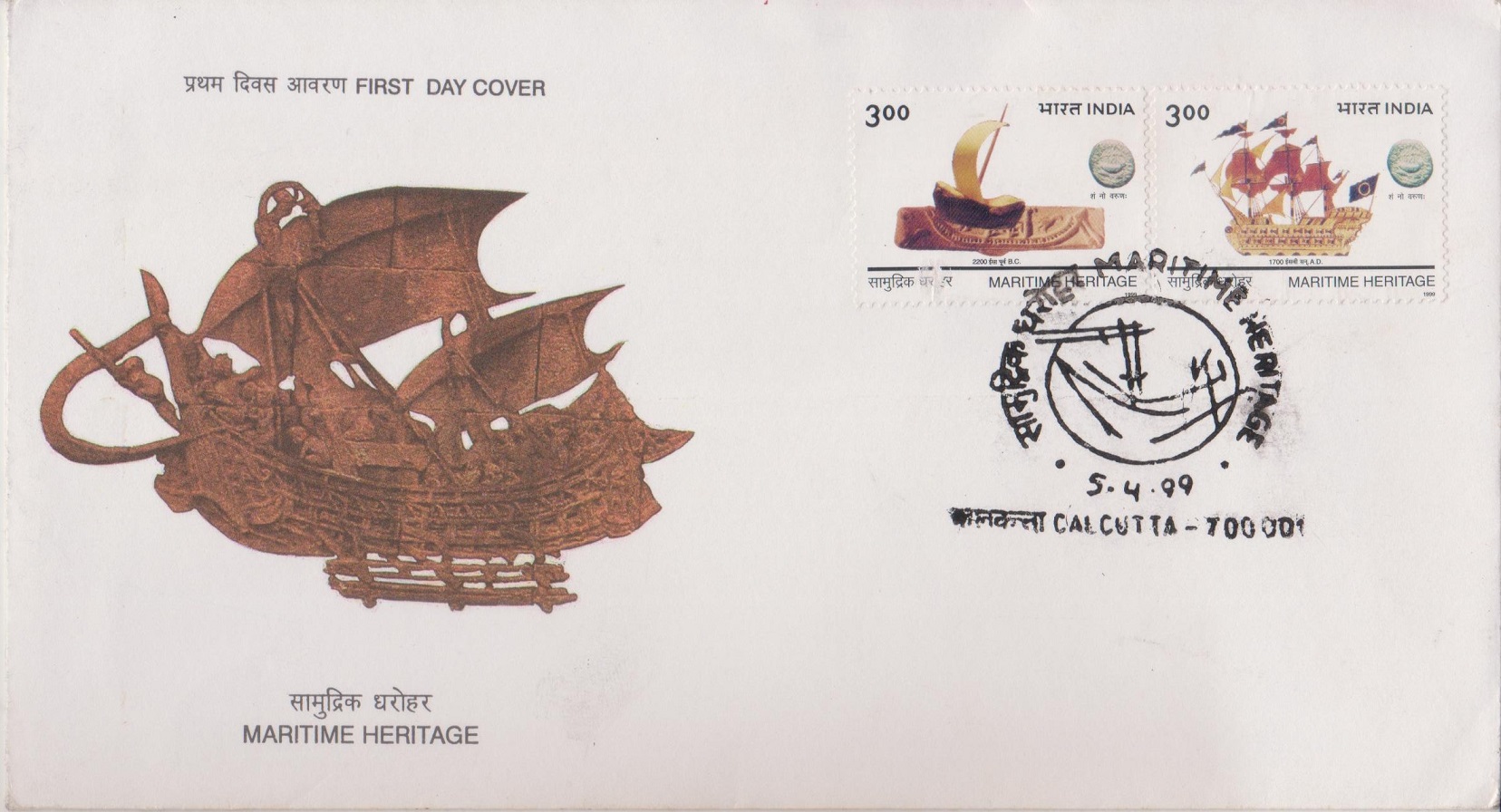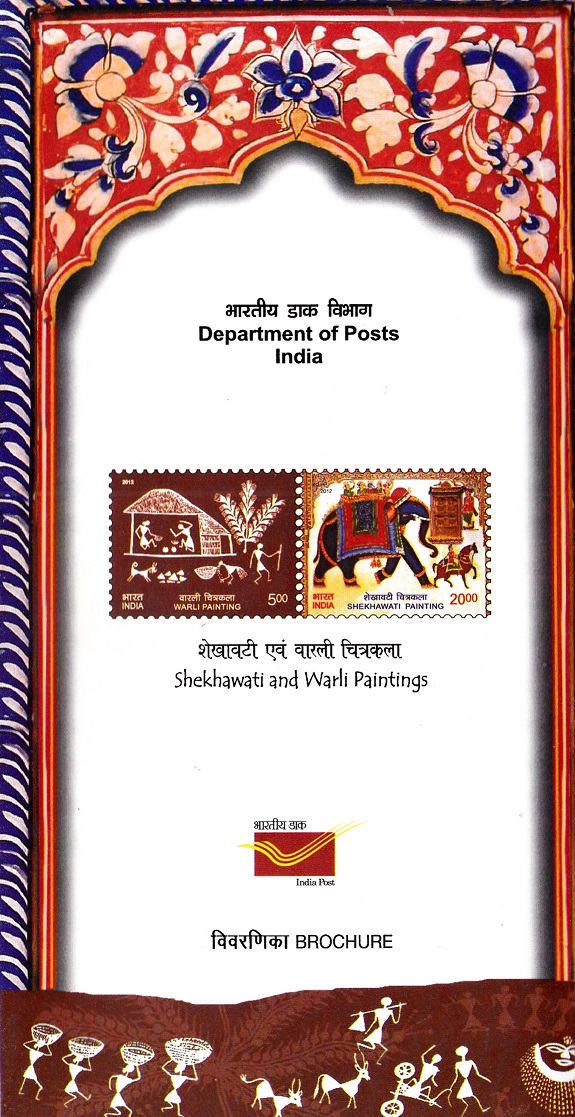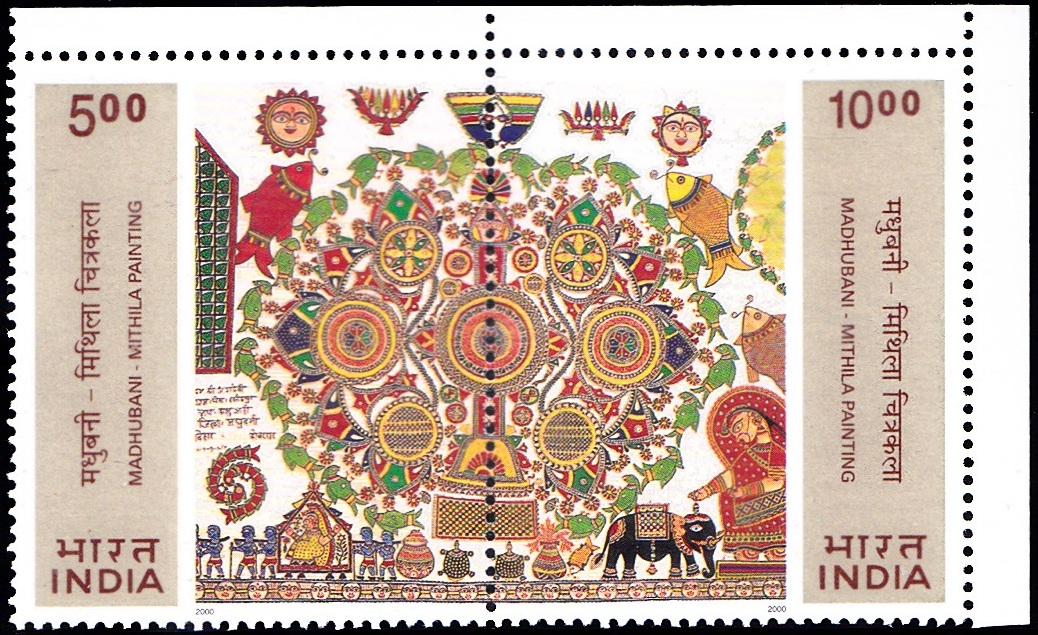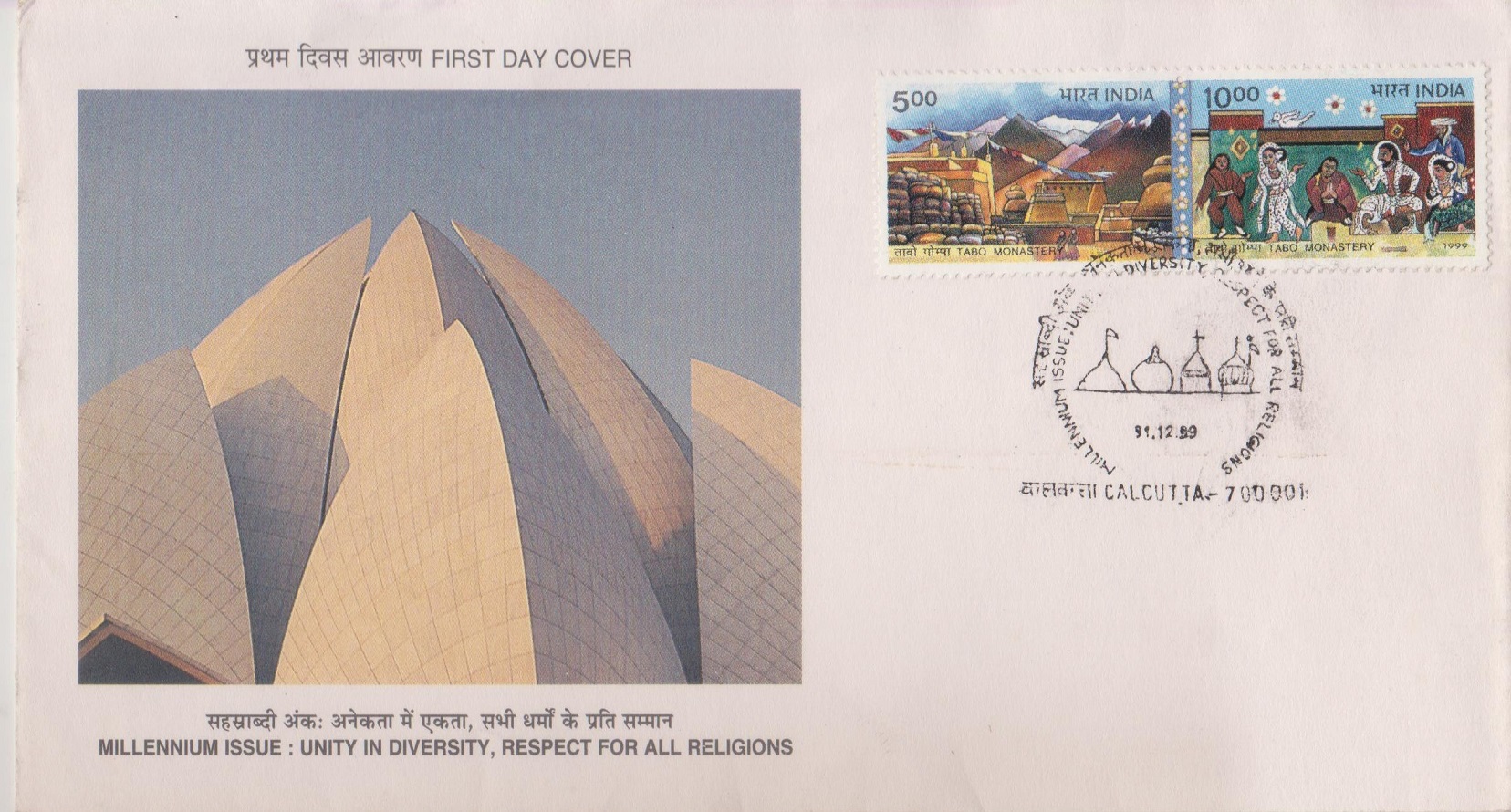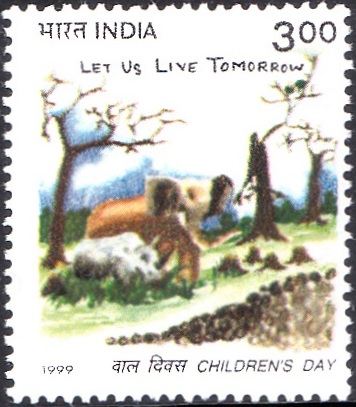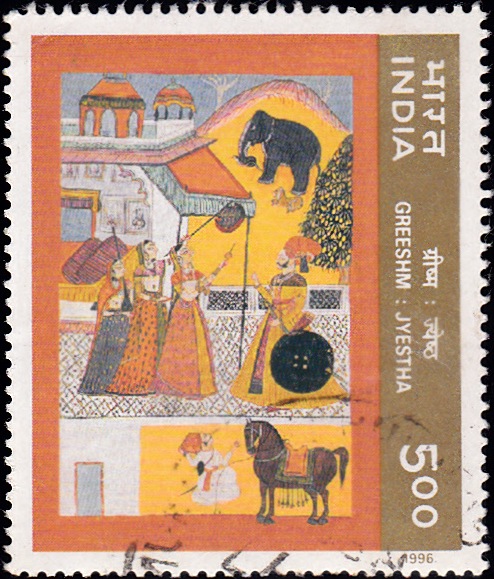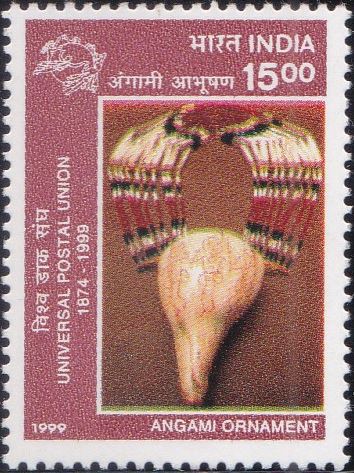
Indian Rural Arts and Crafts Traditions
Complete Set of 4 nos of commemorative postage stamps on the 125th Anniversary of the Universal Postal Union : Rural Arts and Crafts Traditions :
Issued by India
Issued on Oct 9, 1999
Issued for : On 9th October – a day celebrated throughout the World as World Post Day – the Treaty of Berne, establishing the “General Postal Union” was signed (1874). Membership grew so quickly that the name was changed in 1878 to “Universal Postal Union”. India, as one of the oldest members of the U.P.U. (1876), has been associated intimately with the activities of the Union. The 125th anniversary of U.P.U. is commemorated with issue of a set of four stamps, on the theme of “ancient and continuing rural arts and crafts traditions”, signifying the underlying unity in the tremendous diversity.
Credits :
Stamp & FDC : Based on material furnished by Jyotindra Jain, National Handicrafts and Handlooms Museum, New Delhi.
Cancellation : Alka Sharma
Type : Stamps, Mint Condition
Colour : Multi Colour
Denomination : 300, 300, 300 & 1500 Paise
Overall size : 3.91 x 2.90 cms.
Printing size : 3.55 x 2.54 cms.
Perforation : 13 x 13
Paper : Imported unwatermarked Adhesive Gravure Coated Stamp Paper in Sheets 50.8 x 53.5 cms.
Stamps Printed : One Million Each
Number per issue sheet : 35/Each
Printing Process : Photogravure
Printer : India Security Press, Nashik
About :
- The Sanskrit word ‘shilpa’ refers to all forms of creative expression including skill, craft, a work of art or architecture, design, ritual, ability and creativity. The patterns that the crafts traditions in India were to take appeared already mature and firmly established in the cities of the Indus Valley. The rural craft idiom was based on vernacular forms of the artisan guild. Inherent in it was total anonymity. The Indian rural arts are the art of people with lives tuned to the rhythm of nature and its laws, the craftsman and his art serving as ritual contributors in ceremonies, such as birth, initiation, marriage, death, seasonal festivals. The items produced by the craftsmen, form an integral part of the socio-religious order of traditional and contemporary village and tribal life.
- Traditions of Indian Folk Painting : Painted Myths
These traditions date back to a period that may be referred to as “timeless”. These are “living”, traditions linked with the regional historico-cultural settings from which they rise. These may be executed on a wall: “bhitti–chitra”, on a canvas: “pata chitra”, and on the floor: “dhuli–chitra”, or “bhumi–shobha”. The twin functions of Indian folk painting are magico-religious ritual and narration and hence they are more than just decorative. The stamp portrays a tribal wall painting of the Rathwa tribe, depicting “a myth of creation”. In their oral tradition the Rathwa tribe inhabiting the hilly regions of eastern Gujarat and adjoining part of Madhya Pradesh has preserved a creation myth narrating the story of their ancestral Gods, Pithoro and Babo Ind. During certain festivals they paint the legend of Pithoro on the central wall of their hut in a sacred enclosure. The main theme of this painting is the marriage procession of Pithoro and Pithori, witnessed by the Gods as well as several other mythological incidents.
- Jewellery : ceremonial ornaments
Folk and tribal jewellery of India’s richly varied in the material used (lac, glass, shells and beads, silver and a particular type of white metal, alloy of copper or tin and pewter, that imitates silver) as well as design and mode of wearing. The stamp design depicts a necklace of conch shell and beads of glass, shell and stone of the Angami tribe of Nagaland. The colourful beads and the delicate dotted etching of dancing human figures on the conch together make for an elaborate ceremonial ornament characteristic of the proud and valiant Nagas. The tribal metalsmith of India used to fashion jewellery by the age-old lost-wax process. Ritually, gold and silver are accorded a high status in the hierarchy of auspicious metals. Each technique has its specialist craftsperson whose family has been practising the craft for over three to four generations. - Metal forms : symbolic representations of a metaphysical concept
Archaeological evidence established that the art of bronze casting has been continuously practised in India for more than five millennia. The tribal metal craftsman fashions his image in the manner of his forefathers by the same procedure of drawing out wax wires and carefully wrapping them over the inner clay core. His creativity lies in his representations of nature, in his creation of a timeless beauty that underline a unique synthesis of form and function. Each metal image is invested with its peculiar indigenous socio-religious history. The tribal metalsmith’s creative imagination is a spontaneous expression of a communal tradition. Each metal is believed to process its own alchemic properties and the image is really a symbolic representation of a metaphysical concept. The stamp design depicts the “fertility ring” of the Muria tribe, Bastar, Madhya Pradesh. Such rings depicting a farmer with a pair of bullocks, a field with rich harvest, a draw well and landlords coming to collect their share are presented to the bride at the time of their marriage and are worn for seed sowing ceremonies.
- Dolls, Toys, Puppets and Masks
Almost every region of India is renowned for its distinctive tradition of toys, variety of puppetry traditions. Masks of various mediums, metals, wood, clay, gourd, papier mache etc. are used in ceremonies. The stamp design shows the four headed mask for Chhau dance, West Bengal or Bihar; pigment painting on papier mache and gauze. Chhau is a unique combination of pure dance recital and a pantomime, generally symbolising the victory of good over evil in mythical, religious and secular themes and the mask is intended to unleash in the dancer the vital qualities of the personified characters.
- Text : Based on material furnished by Jyotindra Jain, National Handicrafts and Handlooms Museum, New Delhi.


